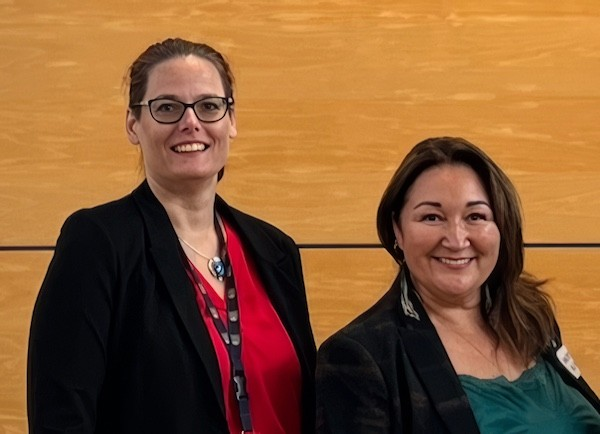Water is life and it also mirrors the health of our communities. Now, two Simon Fraser University-led projects are carving new paths to support community engagement and knowledge sharing about our water and the life it carries thanks to $2.88 million in funding from Genome Canada, Genome BC and industry and academic partners.
When humans, animals, plants and viruses interact with or live in water, they shed their genetic material, or environmental DNA or RNA (collectively eDNA). Monitoring and sharing eDNA data help shape evidence-based public policy and drives faster responses to major public health and environmental threats.
During the COVID-19 pandemic, Canadians witnessed the power of eDNA surveillance through wastewater monitoring for the SARS-CoV-2 virus. However, current eDNA monitoring efforts in Canada remain fragmented across regions and research disciplines, often excluding northern, rural, remote, and Indigenous communities, and making it harder to identify trends in diseases and environmental changes.
To address these gaps, Genome Canada recently approved funding for 12 eDNA surveillance projects nationwide. Two of these iMicroSeq and ChùNet are led by SFU research teams with the iMircoSeq project spearheading overall coordination of the projects.
iMicroSeq: Unifying Canada's eDNA monitoring
The $1.7 million iMicroSeq project aims to connect eDNA initiatives across the country by developing unified data standards and integrating datasets into a Canadian-hosted open-access portal.
Co-led by Fiona Brinkman, distinguished professor of molecular biology and biochemistry at SFU, and Emma Griffiths, SFU health sciences university research associate, iMicroSeq will make water monitoring more efficient and cost-effective at a time when national coordination is critical.
"This project takes an integrated, unifying approach to water monitoring a One Ecosystem' concept using a uniquely Canadian approach that will ultimately lead to faster, more cost-effective responses to health threats," Brinkman says.
Beyond tracking microbes and infectious diseases, iMicroSeq will also coordinate with eDNA research in other areas, such as animal-based monitoring. Governments, organizations, academics, and industries like agriculture and mining are all interested in this collaborative approach, Brinkman adds.
"There are a lot of different projects across Canada, and they're not necessarily all talking to each other," says Griffiths. "Everything is a bit siloed right now. This is an opportunity to break down silos, share protocols and methodologies, better integrate data across the country, and improve community and ecosystem health."
The team will adapt and expand the VirusSeq Data Portal, developed during the pandemic, and use SFU's Cedar Supercomputing Centre for data analysis. Once complete, the public iMicroSeq portal will be hosted at McGill University, with SFU Cloud cataloguing ongoing projects.

ChùNet is one of the projects being led by SFU university research associate Erin Gill (left) and Math'ieya Alatini (right), member of the Kluane First Nation and CEO of the One Yukon Coalition.
ChùNet: Empowering rural and Indigenous communities
While iMicroSeq focuses on national standards, the $1.2 million ChùNet project takes a regional approach. It serves as a case study in community empowerment, aiming to build a made-in-Canada solution for expanding eDNA monitoring in small communities while respecting First Nations rights and sovereignty.
ChùNet is notably the first Genome Canada/Genome BC-funded project led by a faculty research associate Erin Gill of SFU's Department of Molecular Biology and Biochemistry and co-led by a community member: Mathieya Alatini, a Southern Tutchone matriarch, Kluane First Nation member, and CEO of One Yukon Coalition.
"Concerns in Indigenous communities go beyond pathogens," says Gill. "They include changes in fish populations used for subsistence harvest or shifts in local biodiversity. Indigenous peoples have a rich oral history and deep knowledge of their land. When combined with genomics, we can create a more complete picture to guide evidence-based decision-making."
The project will begin by engaging northern, rural, remote, and Indigenous communities to understand their needs and interests in eDNA monitoring. It will then develop a customizable training package for community-led eDNA sampling and analysis.
Communities will collect their own samples, receive results contextualized to their local challenges, and be empowered to advocate for change, Gill explains.
This collaborative effort will involve consultation with First Nations governments, adjacent municipalities, public health officials, academics, and industry partners.










